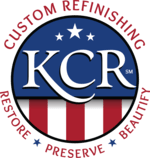Freedom from danger is an impressive goal for a company to employ, but to bring that goal to reality requires considerable effort: planning, training, commitment, management skills, and above all THINKING about safety. Thinking through and applying safety and health programs have proven to be an effective method of identifying and correcting existing workplace safety and health hazards.
Questions to Thinking About Regarding Safety:
- Are you using the appropriate personal protective equipment for the job?
- Can you identify the potential hazards in the workplace that you and/or your co-workers are exposed to daily?
- What is your plan to avoid injury on the job and the first aid procedures to be used in the event of an injury?
- Are you educated, trained, and experienced to perform your job safely?
- Are personnel experienced and educated to handle or use chemicals or other harmful substances in a safe manner?
- Do you have a plan in place in case of an emergency to make sure all personnel are familiar with proper emergency procedures?
- Are you familiar with regulations applicable to your work environment and how to maintain compliance with these regulations?
Think About the Equipment and Machinery Operated at Your Company:
- Only employees qualified by training may operate equipment and machinery.
- The use of any machine, tool, material, or equipment that is not in compliance or is in need of repair is prohibited.
- Machines, tools, material, or equipment must either be identified as unsafe by locking and tagging the controls so that they are inoperable, or physically removed from the job-site.
- Only authorized, competent personal are permitted to perform repairs.
Think About Hazard Evaluations:
Compliant safety programs must provide frequent and regular inspections of the materials, operating procedures, personal protective equipment, job-site conditions, emergency procedures, safe work practices, hazard communication program (including MSDS sheets), and equipment.
To reduce the occurrence of job-related fatalities, injuries, and illnesses, take a proactive approach to safety; think about the safe way to perform a task or project. Develop a compliant safety and health program, planned safety inspections, and proper training. The lack of adequate safety and health programs, hazard evaluations, and training are violations of the OSHA standards and show lack of attention to safety.
These guidelines do not supersede local, state, or federal regulations and must not be construed as a substitute for, or legal interpretation of, any OSHA regulations.
For more information, contact KC Restoration today!

